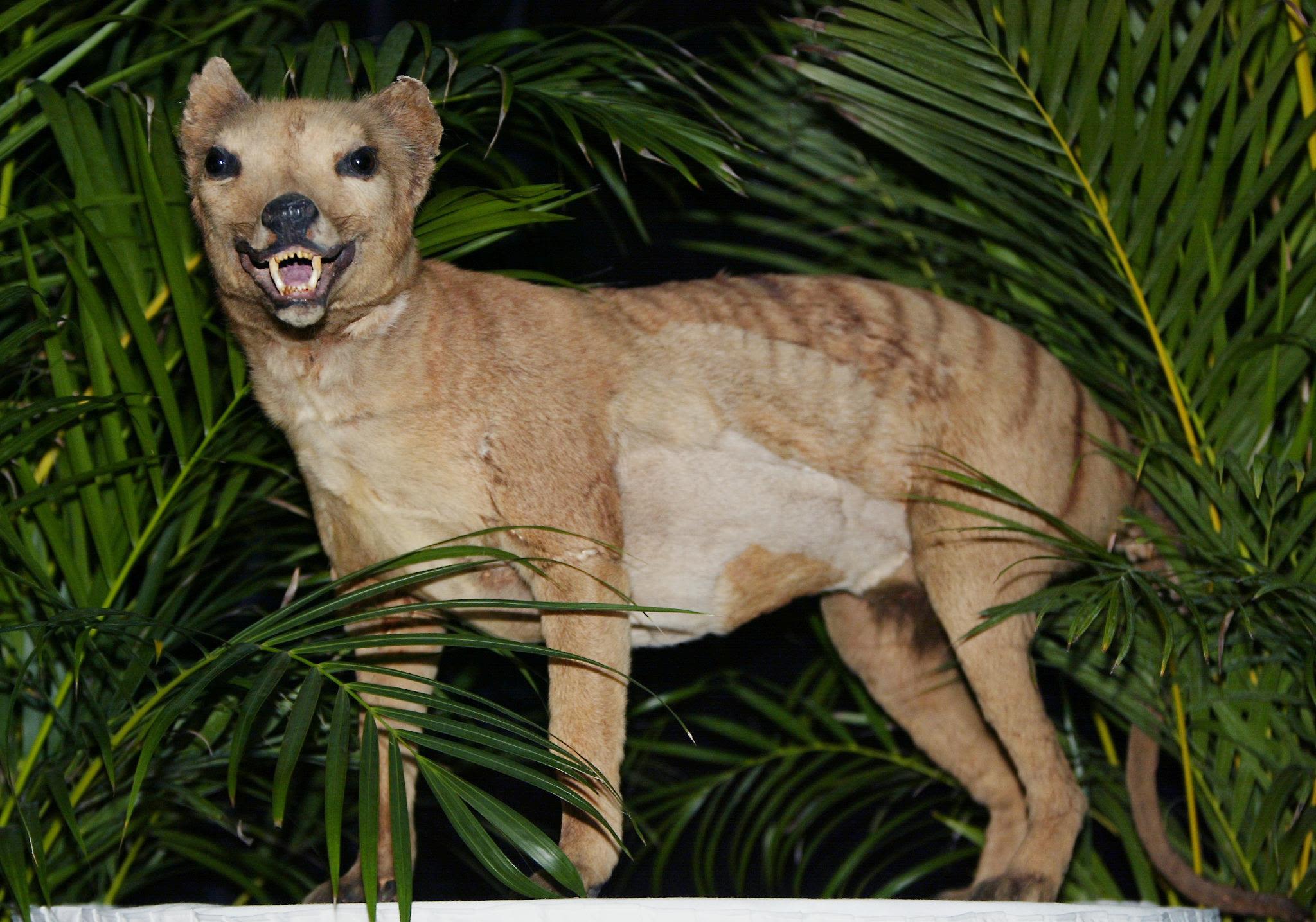
The Tasmanian tiger, also known as the thylacine, is a fascinating creature that once roamed the wilds of Tasmania. Despite its name, the Tasmanian tiger is not actually a tiger at all, but rather a marsupial. Unfortunately, the Tasmanian tiger is now considered extinct, with the last known individual dying in captivity in 1936. However, the legacy of this unique animal lives on, and there are many interesting facts and mysteries surrounding the Tasmanian tiger. In this article, we will explore 18 intriguing facts about the Tasmanian tiger, shedding light on its physical characteristics, habitat, behavior, and unfortunate demise. So, let’s dive in and discover the wonders of this enigmatic creature from the annals of Australia’s natural history.
Key Takeaways:
- The Tasmanian Tiger, also known as the Thylacine, was a unique and solitary marsupial native to Tasmania, Australia, and New Guinea. Its extinction serves as a reminder of the impact of human activities on wildlife.
- Despite its extinction, the Tasmanian Tiger continues to inspire scientific curiosity and holds cultural significance for the Tasmanian Aboriginal people. Its legacy highlights the importance of conservation and the delicate balance of our natural world.
The Tasmanian Tiger, also known as the Thylacine, was native to Tasmania, Australia, and New Guinea.
The Tasmanian Tiger was a carnivorous marsupial that resembled a large dog with tiger-like stripes on its back. Unfortunately, it is now considered extinct, with the last known individual dying in captivity in 1936.
The Tasmanian Tiger had a unique pouch.
While most marsupials have a front-opening pouch, the Tasmanian Tiger’s pouch faced towards the tail. Its pouch was also flexible and could stretch to accommodate multiple joeys.
The Tasmanian Tiger had a stiff, kangaroo-like tail.
Their tails were thick and muscular, and they used them for balance while hopping. It is believed that they could jump significant distances using their powerful hind legs.
The Tasmanian Tiger was a solitary animal.
They were known to be solitary creatures, only coming together during the breeding season. This behavior contributed to their decline as it reduced opportunities for successful mating.
The Tasmanian Tiger had a unique jaw structure.
Its jaw could open up to 120 degrees, allowing it to have an incredibly wide gape. This adaptation enabled it to catch and swallow larger prey.
The Tasmanian Tiger was a nocturnal hunter.
They were primarily active at night, hunting for small to medium-sized animals such as kangaroos, wallabies, and birds. Their night vision was excellent, giving them an advantage in the dark.
The Tasmanian Tiger had a distinctive yapping call.
They made a series of short, sharp barks or yelps, which is how it got its nickname “Tasmanian Tiger.” This unique vocalization was believed to be used for communication and territory marking.
The extinction of the Tasmanian Tiger is largely attributed to human activities.
Widespread hunting, habitat loss, and disease spread by introduced species such as dogs and foxes are some of the main factors that led to their extinction. They were also viewed as a threat to livestock, leading to further persecution.
The last known Tasmanian Tiger died in Hobart Zoo.
The last Tasmanian Tiger named Benjamin died on September 7, 1936, in captivity at the Hobart Zoo. Despite efforts to breed and conserve the species, Benjamin’s death marked the end of an era.
The Tasmanian Tiger had a controversial reputation.
Often considered a nuisance by farmers, the Tasmanian Tiger was subjected to government-sanctioned extermination campaigns. However, in recent years, there has been renewed interest in its conservation and possible sightings in the wild.
The Tasmanian Tiger had a complex extinction story.
Its disappearance from the wild in Tasmania has been attributed to a combination of factors, including habitat destruction, competition with introduced predators, and disease. However, reports of sightings in remote areas have fueled speculation that a small population may still exist.
Tasmanian Tigers had a unique way of carrying their young.
The female Tasmanian Tiger had a cloaca, a single opening that served both for reproduction and waste elimination. This unique adaptation allowed them to give birth to live young and carry them in the pouch until they were old enough to venture out.
Tasmanian Tigers had a diverse diet.
Although primarily carnivorous, they also consumed fruits, birds’ eggs, and even small reptiles. Their ability to adapt to different food sources likely contributed to their survival in various habitats.
The Tasmanian Tiger had a stiff, kangaroo-like tail.
Although they were not related to kangaroos, they shared a similar tail structure. The tail helped them with balance and stability while hopping, making them efficient hunters.
The Tasmanian Tiger’s stripes were unique to each individual.
Similar to human fingerprints, the pattern and arrangement of stripes on the back of each Tasmanian Tiger were distinct. This characteristic made it easier for researchers to identify individuals in the wild.
The potential for Tasmanian Tiger revival.
With significant advancements in cloning and genetic engineering, some researchers believe it might be possible to bring back the species using preserved DNA samples. However, the ethical and practical implications of such an endeavor are still heavily debated.
The cultural significance of the Tasmanian Tiger.
The Tasmanian Tiger holds great cultural significance for the Tasmanian Aboriginal people. It features prominently in their stories, art, and traditional practices, demonstrating its deep-rooted connection to the indigenous culture of Tasmania.
The Tasmanian Tiger inspires scientific curiosity.
Despite its extinction, the Tasmanian Tiger continues to captivate the scientific community. Researchers study its remains, genetics, and ecological impact to gain a better understanding of its unique place in the ecosystem and its potential lessons for conservation.
In conclusion, the Tasmanian Tiger, also known as the Thylacine, was a fascinating and enigmatic creature. These 18 facts shed light on its physical characteristics, behavior, and heartbreaking journey to extinction. While it may no longer roam the wild, the legacy of the Tasmanian Tiger lives on, reminding us of the importance of conservation and the delicate balance of our natural world.
Conclusion
The Tasmanian Tiger, also known as the Thylacine, was a fascinating and unique animal that once roamed the wilds of Tasmania. Unfortunately, due to hunting, habitat loss, and disease, this majestic creature is now considered extinct, with the last known individual dying in captivity in 1936. Despite its demise, the Tasmanian Tiger continues to capture our imagination and interest.
As we delve into the 18 facts about the Tasmanian Tiger, we gain a deeper understanding of its remarkable characteristics, appearance, and behavior. From its dog-like head and kangaroo-like tail to its pouch for carrying young, this marsupial predator was truly one of a kind. Learning about its hunting techniques, solitary nature, and unique vocalizations sheds light on its complex existence in the Tasmanian ecosystem.
While we may never have the opportunity to witness the Tasmanian Tiger in person, its legacy lives on through conservation efforts, scientific research, and public awareness. By understanding and appreciating the rich history and fascinating details of the Tasmanian Tiger, we can contribute to the preservation of other endangered species and protect the precious biodiversity of our planet.
FAQs
Q: What is a Tasmanian Tiger?
A: The Tasmanian Tiger, or Thylacine, was a carnivorous marsupial that was native to Tasmania, Australia.
Q: Why is the Tasmanian Tiger called a tiger?
A: The name “Tasmanian Tiger” was given to this animal due to its striped lower back, reminiscent of a tiger’s markings.
Q: What did the Tasmanian Tiger eat?
A: The Tasmanian Tiger primarily fed on small to medium-sized animals, such as kangaroos, wallabies, and birds.
Q: Why did the Tasmanian Tiger become extinct?
A: The extinction of the Tasmanian Tiger was primarily caused by human factors, including hunting and habitat destruction.
Q: Are there any living Tasmanian Tigers today?
A: There are no known living Tasmanian Tigers today. The last individual died in captivity in 1936.
Q: Can the Tasmanian Tiger be cloned?
A: While the possibility of cloning the Tasmanian Tiger has been discussed, it has not been successfully achieved so far.
Q: How big was the Tasmanian Tiger?
A: The Tasmanian Tiger was about the size of a medium to large dog, with an average length of around 4 feet (120 cm).
Q: Did the Tasmanian Tiger have any predators?
A: As an apex predator in its habitat, the Tasmanian Tiger did not have any natural predators.
Q: Can the Tasmanian Tiger species be reintroduced?
A: Due to the extinction of the species, reintroduction is not currently possible.
Q: How can I help with Tasmanian Tiger conservation?
A: You can support organizations and research initiatives dedicated to the study and conservation of endangered species, including the Tasmanian Tiger.
The Tasmanian Tiger's fascinating story captivates nature enthusiasts and animal lovers alike. While this unique marsupial is now extinct, many other intriguing creatures and conservation efforts continue to inspire. Delve into the world of quolls, another iconic Australian animal with a rich history. Explore astonishing facts about wildlife conservation and how it shapes our planet's future. For those intrigued by mysterious creatures, embark on a journey to uncover the enigmatic chupacabra, a cryptid that has captured imaginations for decades.
Was this page helpful?
Our commitment to delivering trustworthy and engaging content is at the heart of what we do. Each fact on our site is contributed by real users like you, bringing a wealth of diverse insights and information. To ensure the highest standards of accuracy and reliability, our dedicated editors meticulously review each submission. This process guarantees that the facts we share are not only fascinating but also credible. Trust in our commitment to quality and authenticity as you explore and learn with us.


